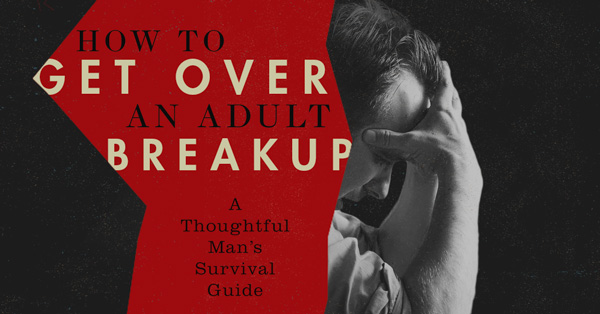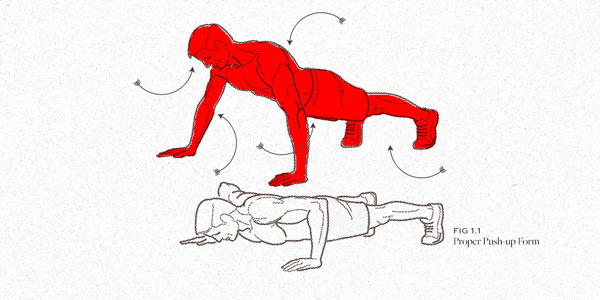Your mind has two jobs.
First, it solves problems – not enough money, not enough time, and a leaking sink that keeps turning your kitchen into a water park for ants.
But the second job is paradoxical.
Research by Harvard University shows your mind doesn’t just solve problems, it also creates them. Did you ever sit somewhere completely happy, then you think “Oh, I could work on this” or “Hm, wouldn’t that be better another way?” Before you know it, you’re waist-deep into something you didn’t even care about a few seconds ago.
“We are dying from overthinking. We are slowly killing ourselves by thinking about everything. Think. Think. Think. You can never trust the human mind anyway. It's a death trap.” ― Anthony Hopkins
Aside from philosophy, the science is clear – overthinking leads to anxiety and depression.
I’ve spent an ungodly amount of hours lying awake at night in my bed, thinking about the same issues again and again without finding a solution. When I got up in the morning and sat down at my desk, the mental gymnastics continued. Like poison, it was both paralyzing and eating me up from the inside.
I could’ve used that time to do something I enjoyed, hang out with the people I love, or actually solve the problem.
But I was a prisoner of my thoughts.
Thankfully, I found a few super effective methods to jump off the mental carousel before it gets up to breakneck speed.
The Simple Question That Will Short-Circuit Your Worry Wires
You are not your mind.
When you think, you have a voice inside your head. This voice is not you.
If it was, you couldn’t listen to it, just like your tongue can’t listen – your ears can’t speak, either.
So if you’re not the voice, who are you?
You are the observer. You’re the one witnessing the mind, like looking at numbers and letters flying by on a computer screen. Once you understand this, you can short-circuit the mind.
The mind tends to run in circles and make you feel like you’re moving forward when in reality, you end up right where you were before.
To stop it chasing its tail, you need to short-circuit it.
Like asking a computer a question it can’t answer, you can make it crash and stop dead in its tracks.
Ask yourself:
“What will my next thought be?”
Then listen to what it gives you – radio silence.
“Quiet the mind, and the soul will speak.” – Ma Jaya Sati Bhagavati
Every time you do this, you bring the carousel to a halt. When it starts spinning again, just repeat the process until it’s run out of momentum and energy.
Remember, you’re not the mind – merely the one looking at it from the outside.
Question and observe.
Use This Technique To Turn Chaos Into Order
There’s one thing your brain hates like a four-year-old hates Brussels sprouts.
Forgetting.
From an evolutionary perspective, this makes perfect sense. Corey the Caveman didn’t want to forget that an angry bear lived in the cave close to the waterfalls or that eating red and yellow striped berries made him have explosive diarrhea.
To keep you from forgetting, your brain creates thought loops.
You lie awake at night, your head spinning around the same thing again and again – and no way out.
“Your mind is for having ideas, not holding them.” – David Allen
One of the best ways to break my thought spirals is free-flow journaling.
It’s incredibly simple:
- Take a pen and piece of paper and start writing whatever comes up.
This has two effects.
First, it signals to your brain that you recorded the important thing, so it can stop bringing it up every 38 seconds.
Second, it gives your thoughts structure so you stop jumping from one to the other.
Your thoughts will slow down and your head will become empty after a page or two.
Vomit the words on paper and watch the magic happen.
Beat Overthinking With Targeted Thinking
What makes overthinking so bad isn’t just the actual thinking.
It’s the up-and-down, the in-between, the neither-fish-nor-meat. It’s engaging with the thoughts, then withdrawing because you realize you’re overthinking, then not having the problem solved so the thoughts come back again. You’re stuck in a limbo state where you try to escape but engage at the same time.
This slowly destroys your sanity.
“The mind is a superb instrument if used rightly. Used wrongly, however, it becomes very destructive. To put it more accurately… you usually don't use it at all. It uses you.” – Eckhart Tolle
So what’s the “right” way to use it?
Some situations need thinking and reflection.
But instead of wasting energy with half-assed thoughts, I like to schedule a “worry hour” – a dedicated time where my mind can go apeshit so it stays quiet the rest of the week.
In between, I tell myself “Tomorrow at 5 pm, I’ll dedicate all my energy to this problem – and now, I’ll dedicate all my energy to something else.”
This gives your brain peace of mind that it will get to say what it wants to – and you can focus on what matters right now.
Everything in its time.
Explore The True Roots Of Your Thoughts
Overthinking isn’t just about thoughts, but also the emotions that fuel them.
Stress, anxiety, sadness, anger, disappointment, shame – if you’ve suppressed them, the subconscious will create thoughts that bring them out.
I’ve noticed this a lot when I was still actively dating.
When I sent a text, I overthought what I said, ruminating on whether it was too risky or too boring. Why? Because I was afraid of losing the other, a remnant of deep childhood trauma.
Unfelt emotions trigger thought spirals. They allow you to escape because while you’re busy thinking, you’re not feeling. But if you’re not feeling, the cycle will happen again and again.
So the next time an unpleasant brain snippet comes up, feel the emotion behind it. Give it space. Experience it fully.
“You can't stop the waves, but you can learn to surf.” – Jon Kabat-Zinn
Once you’ve felt it, you can let go of it – and with it, the thoughts will lose their mesmerizing power.
Leverage This Innocent Household Item
What’s the opposite of overthinking?
The answer is simple – not thinking.
And not thinking is nothing but being in the moment.
As long as you are present, you’re not entangled in a hypothetical scenario in your head. Thoughts about the future and the past cannot exist in the present.
“The here and now is all we have, and if we play it right, it's all we'll need.” – Ann Richards
But, how do you become present when you need it most?
I’ve found a simple trick – all you need is a rubber band wrapped around your wrist.
When you notice you’re overthinking, pull it back and let it snap against your skin.
This has two effects:
First, it brings you back into the present moment.
Second, the sharp pain conditions you to stop falling into thought spirals.
It works whenever and wherever you are – and all you need is a rubber band.
How To Stop Overthinking For Good
The mind is amazing at solving problems.
Like a hunting dog following a scent, it sniffs out the solution.
But sometimes, that dog becomes rabid. It chases its tail, spinning endlessly, wasting tons of time and energy without accomplishing anything.
That’s what overthinking is – and if you don’t have the right tools to stop it, that crazy dog will eventually bite you in the ass.
So instead of spending your days and nights ruminating and worrying, here’s what you can do:
- Ask yourself: “What will my next thought be?”
- Use free-flow journaling to structure your thoughts and let them go.
- Schedule a specific “Worry Hour” dedicated to thinking about a topic as much as you want to.
- Feel the emotions behind your thoughts so they stop coming up again and again.
- Snap a rubber band against your wrist to pull yourself back into the present moment.
Think less. Live more.
“Your mind is your instrument. Learn to be its master and not its slave.” – Remez Sasson















